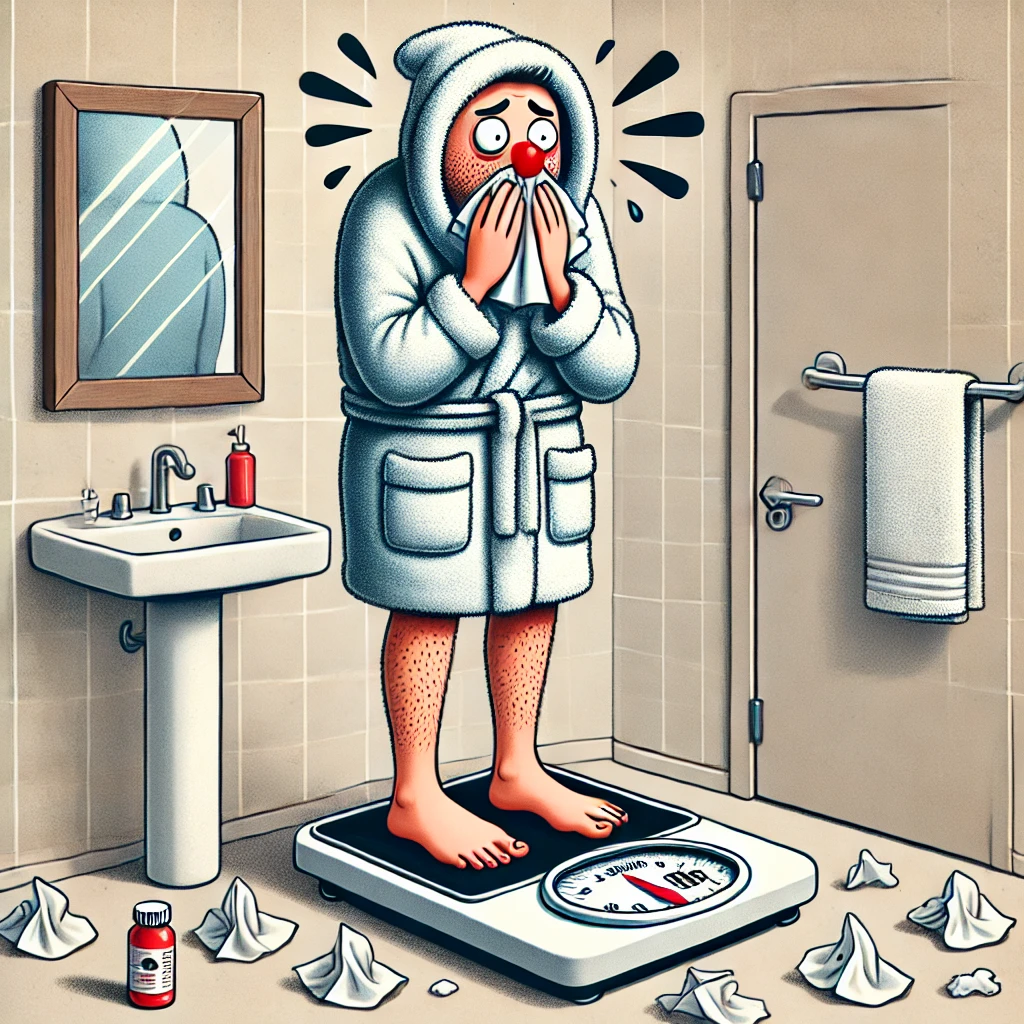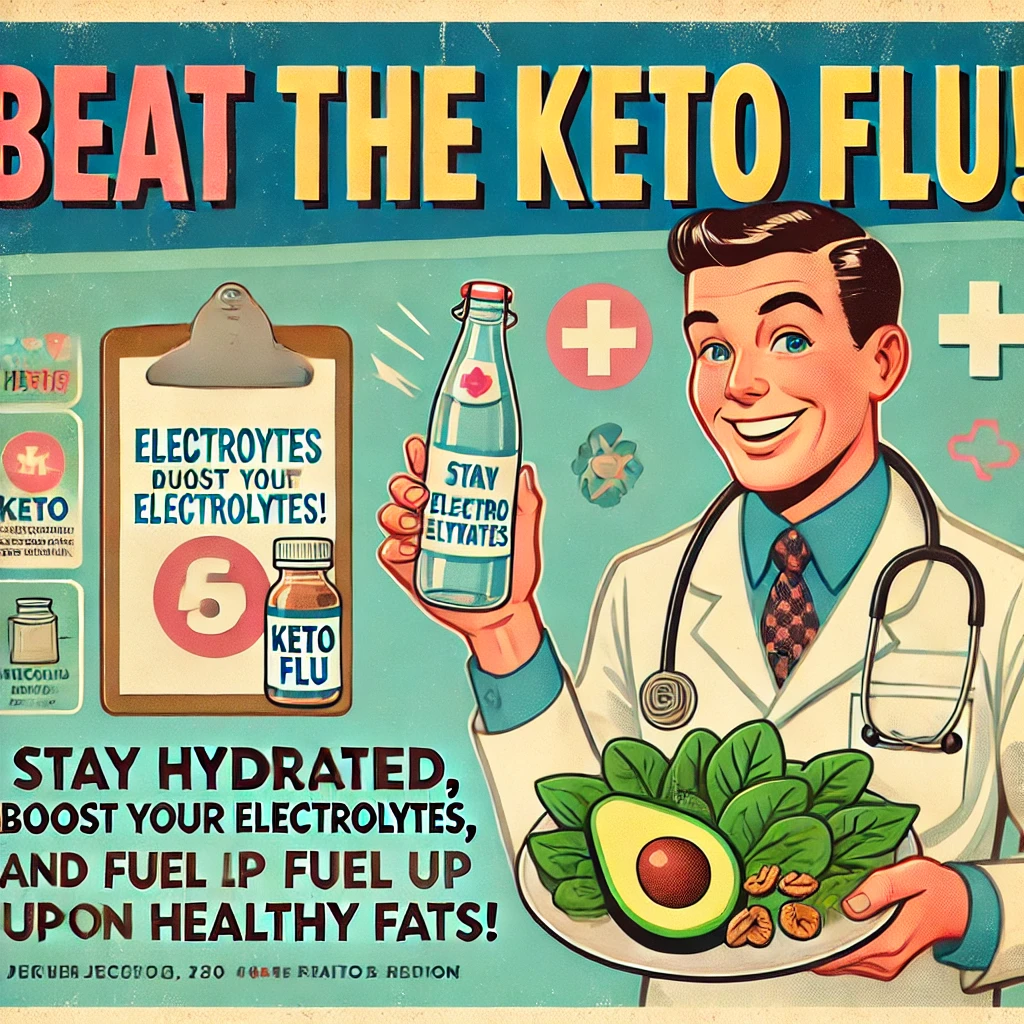
When I first started the ketogenic diet, I was excited, motivated, and ready to see the results that so many people rave about. You hear about increased energy, mental clarity, and of course, fat loss. But what no one really emphasizes enough—until you’re suddenly Googling it at 2 a.m. because you feel awful—is the dreaded “Keto Flu.” Trust me, it’s real, and it can knock you out if you’re not prepared.
But here’s the good news: you can avoid the worst of it. I’ve been on the keto diet for a while now, and after experiencing the initial signs of the Keto Flu, I quickly found ways to prevent it from ruining my progress and well-being. I’ll walk you through what the it is, why it happens, and, most importantly, how I’ve managed to sidestep most of its unpleasant symptoms.
What Is the Keto Flu?
Before diving into my strategies, let me briefly explain what the Keto Flu is for those who might be new to the ketogenic diet. It is essentially a group of symptoms that mimic the flu—hence the name—and it typically shows up when your body is transitioning into ketosis. This can happen within the first week or two of starting keto.
Some common symptoms include:
- Headaches
- Fatigue or low energy
- Brain fog
- Nausea
- Irritability
- Muscle cramps
It’s your body’s way of reacting to the sudden reduction in carbs, as it switches from burning glucose (sugar) to burning fat for energy. This shift can feel like a shock to the system, especially if you were previously consuming a diet high in carbohydrates. The good news is that this flu-like feeling is temporary, but still, no one wants to suffer through it.
My Strategies for Avoiding the Keto Flu
Through trial and error, I’ve discovered several ways to either completely avoid or significantly minimize Keto Flu symptoms. Here’s how I handle it:
1. Hydrate Like It’s Your Job
The moment I started keto, I noticed that I was running to the bathroom a lot more. This is because, when your body stores carbs, it also retains water. Once you cut down on carbs, you start losing a lot of water weight—especially in the first week. This can leave you dehydrated, which is one of the main reasons people experience headaches and fatigue during the initial phase of keto.
To combat this, I made hydration my number one priority. I aim to drink at least 2.5 to 3 liters of water per day. But I don’t just guzzle plain water. I add a pinch of salt or electrolytes to it. More on that in a second.
2. Electrolytes: Your Secret Weapon
One of the biggest lessons I learned early on was that losing all that water also means losing vital electrolytes like sodium, potassium, and magnesium. This electrolyte imbalance can make you feel weak, dizzy, and generally under the weather. I figured out quickly that replenishing these electrolytes is key to avoiding the worst of the Keto Flu.
Here’s what I do:
- Sodium: I add a pinch of Himalayan salt to my water or sprinkle more on my food. Keto dieters need more sodium because the diet naturally lowers insulin levels, which causes the kidneys to excrete more sodium.
- Potassium: Avocados and leafy greens are my go-to sources for potassium. I also use potassium salt (you can find it in most grocery stores).
- Magnesium: I make sure to eat foods rich in magnesium like spinach, almonds, and pumpkin seeds, but I also take a magnesium supplement. This is especially important if you experience muscle cramps, which I did in the early days.
Trust me, electrolytes are game-changers. When I started making a conscious effort to balance them, I noticed a huge improvement in how I felt. No more dizzy spells or muscle cramps!
3. Ease Into It
One mistake I made when I first started keto was diving in headfirst, cutting my carbs drastically overnight. While some people can handle this, for many (including myself), this approach can shock your body and lead to severe Keto Flu symptoms.
Instead, I’ve found it helpful to ease into the diet gradually. Rather than cutting carbs from 200 grams to 20 grams in one day, I tapered them down over the course of a week. This gave my body more time to adjust to burning fat for fuel, and it really helped minimize the shock to my system.
If you’re new to keto or have struggled with the Keto Flu in the past, try gradually lowering your carb intake. It’s a slower approach but much kinder to your body.
4. Don’t Fear Healthy Fats
When you reduce carbs, you need to increase your fat intake to ensure your body has enough fuel. At first, I made the mistake of not eating enough fat because, like many people, I was still a little scared of fats (thanks to years of low-fat diet culture). But on keto, fats are your friend, and they help keep your energy levels up while your body transitions.
I started incorporating more healthy fats into my meals—things like avocados, coconut oil, olive oil, nuts, and fatty cuts of meat. Once I did, my energy levels stabilized, and I didn’t feel as sluggish. Plus, I stayed full for longer, which helped ward off cravings.
5. Stay Active, But Don’t Overdo It
I’m a pretty active person, and I love to work out, but during the first week of keto, I noticed that I felt more fatigued than usual. This made sense because my body was still adjusting to the new fuel source (fat instead of carbs).
Instead of pushing through it with high-intensity workouts, I decided to listen to my body and focus on lighter activities like walking, yoga, or stretching during those first few days. Once my energy levels returned (which they did after about a week), I slowly ramped up my exercise routine again.
It’s all about balance. I found that staying active, even if it’s just going for a walk, helped boost my mood and energy without overwhelming my body.
6. Focus on Sleep and Stress Management
One thing I didn’t expect when starting keto was how much sleep and stress could impact how I felt, especially during the early stages of the diet. In fact, lack of sleep and high stress can make the symptoms worse.
I started making a real effort to get at least 7 to 8 hours of quality sleep each night. I also incorporated relaxation techniques like meditation and deep breathing into my routine to help manage stress. These small changes made a big difference in how I felt, both physically and mentally.
7. Incorporate Bone Broth
This one’s a bit of a keto hack that I swear by. When I felt the first signs of Keto Flu—like headaches or fatigue—I would sip on a warm cup of bone broth. Not only is it comforting, but it’s also packed with electrolytes, especially sodium. It’s like a soothing, nutrient-rich reset for your body.
You can make your own bone broth or buy it pre-made, but the key is to choose one that’s low in carbs and free from unnecessary additives. Bone broth became my go-to whenever I felt a little “off,” and it always worked to get me back on track.
8. Be Patient With Yourself
Finally, and this might be the most important tip of all, I’ve learned to be patient with myself. The ketogenic diet is a big change for your body, especially if you’re coming from a diet that was previously high in carbs. It’s totally normal to feel a little out of sorts as your body adjusts to this new way of eating.
But once you push through that initial transition period, the benefits are well worth it. I now feel more energetic, mentally sharp, and healthier than ever. The Keto Flu is temporary, but the rewards of sticking with the diet can be long-lasting.

My Final Thoughts
If you’re starting or struggling with the keto diet and dealing with the Keto Flu, don’t despair! By staying hydrated, replenishing your electrolytes, eating enough fat, and giving your body time to adjust, you can significantly reduce or even avoid the worst of the symptoms.
Everyone’s experience is a little different, but these strategies have worked wonders for me. The ketogenic diet can be an incredibly rewarding lifestyle, and while it may be a temporary hurdle, it doesn’t have to be a dealbreaker. Stick with it, and you’ll soon start reaping the benefits of ketosis!
Now, I won’t say that every single day has been smooth sailing, but with a little preparation and patience, the Keto Flu is entirely manageable. I hope my tips can help you avoid feeling like you’ve been hit by a truck when you first start keto. Instead, you’ll be better equipped to embrace the positive changes that come with this incredible lifestyle.

